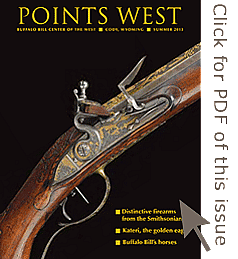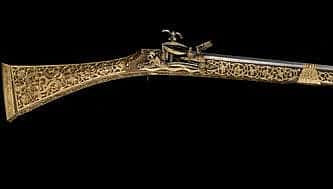
Journeying West, Distinctive Firearms from the Smithsonian – Points West Online
From Points West magazine
Originally published in Summer 2013
Distinctive Firearms from the Smithsonian
In 1876, the Smithsonian’s National Museum of American History established the National Firearms Collection in honor of the American Centennial. Since then, it has grown to nearly 7,000 artifacts. In the collection are a range of firearms that have helped shape the American experience and identity.
The Buffalo Bill Center of the West, an Affiliate of the Smithsonian Institution, is proud to announce the journey westward of sixty-four unique firearms from this collection—including four which many consider national treasures. Among these artifacts are numerous patent models documenting innovations in the field, international imagination, and historic distinction. The Smithsonian entrusted the Center with the conservation of these firearms and is honored to display them at the Cody Firearms Museum.
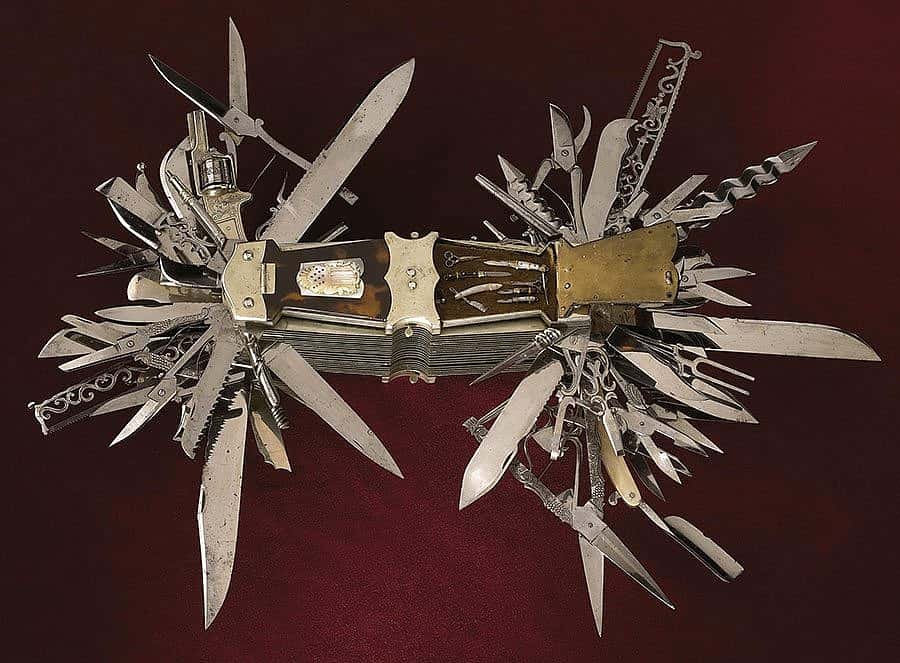
Included in this exhibition is a seven-foot-long gold Miquelet lock musket given to President Thomas Jefferson in 1805 by the Bey of Tunisia after the Tripolitan Wars—an extravagant firearm often considered a national treasure. Another treasure is a beautifully embellished Jaeger rifle that belonged to Catherine the Great of Russia (1729–1796). A velvet cheek piece added to this firearm ensured her imperial face would not touch the stock.

The Gatling gun, western cinematic favorite, is easily recognizable in the category of patent innovation. Before inventor Richard Gatling could make his invention a reality, he first created a miniature wooden prototype for the U.S. Patent Office—on display with this collection. Patent officials approved the design in 1862, allowing for the production of the full scale Gatling guns, examples of which visitors can see throughout the Cody Firearms Museum.
The Buffalo Bill Center of the West and the Smithsonian Institution invite you to explore these firearms that have helped shape our nation and beyond. Both institutions hope that you’ll allow this exhibition to mold your own experiences and conceptions of firearms from invention to production, and then illuminate for you their roles in the development of our nation.
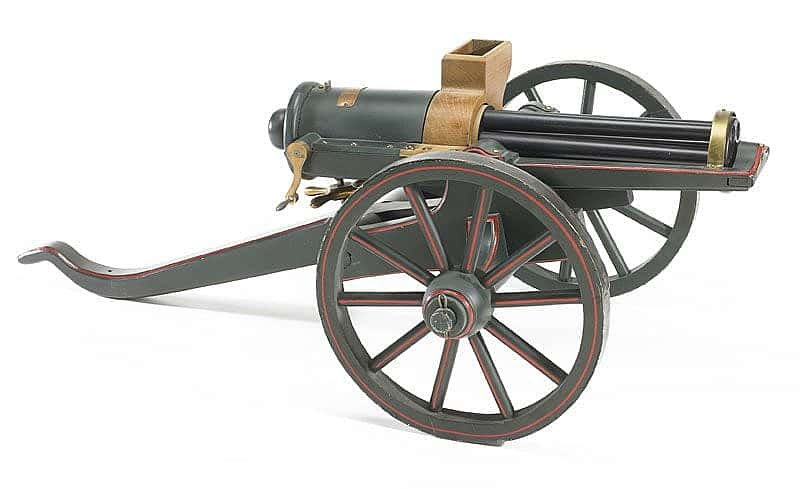
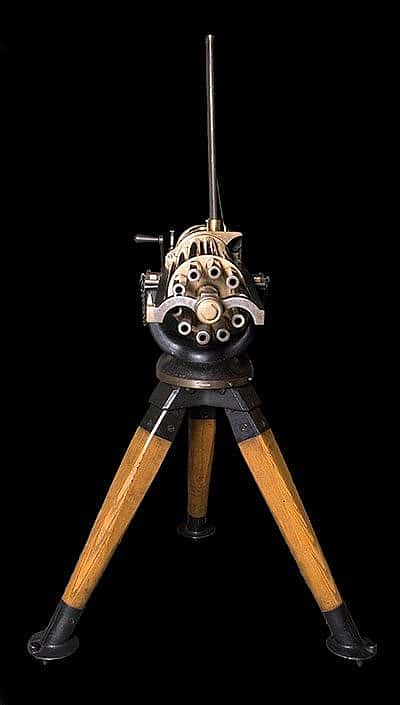
Patent and experimental models
Obtaining a patent is not a new process; in fact, the procedure has been around since ancient Greece. Patents were well known in North America as early as the eighteenth century, but weren’t strictly enforced. Thomas Jefferson formed a patent committee in 1790, but the group dissolved three years later. The process was revived in the early nineteenth century, but was placed under investigation in 1836—prompting the U.S. Patent Act of 1836, which standardized the patent process.
According to the Act, all inventions had to be novel and useful. A look at these patent model firearms shows that some proved to be innovative technological advancements; others were downright dangerous.
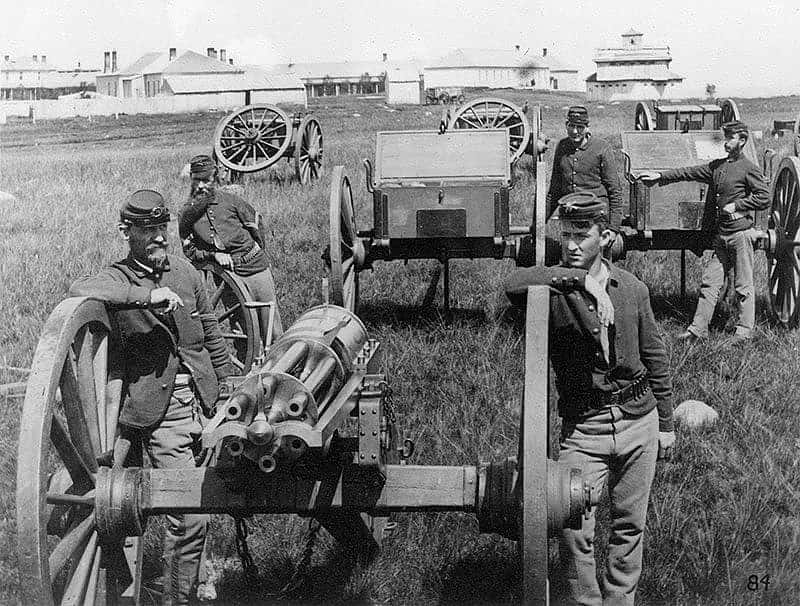
Throughout history, amateur and professional inventors have attempted to improve upon firearms technology with rare and unique experimental designs. Some were successful; others were never produced past their experimental phase. Moreover, craftsmen sometimes custom-made an experimental firearm for a particular individual, never intending to mass produce it.
The U.S. Patent Office donated the firearms that comprise the Smithsonian Collection of Patent Firearms. The patents for the selection of firearms on display range from 1836 to 1879.
Possessors and users
Firearms reveal stories and reflect diverse cultures. Some of these stories become disjointed when the object is separated from its owner. However, when the two come together, the stories are rich and entertaining, and can reveal previously untold stories from history as well as the origin of a particular firearm.
Decorated firearms
While the National Firearms Collection is located at an American history museum, the collection is not limited to strictly American firearms. It contains firearms from around the world. Firearms experts know that some of the most embellished guns ever designed were developed in foreign countries. In fact, many art museums display these types of firearms in their galleries as works of art.
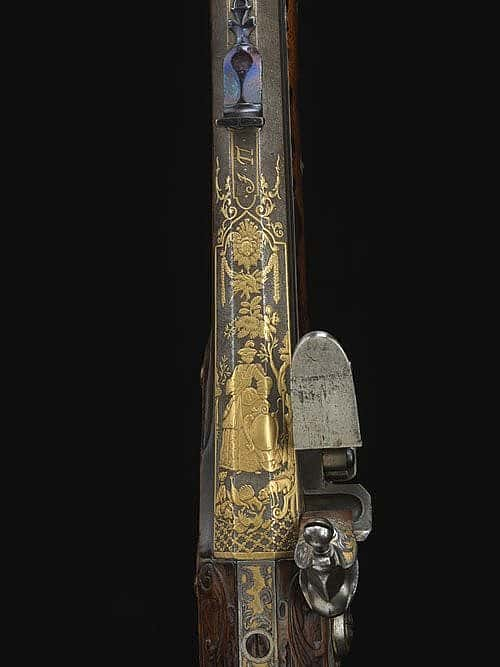
The Buffalo Bill Center of the West thanks the Smithsonian Institution’s National Museum of American History, Kenneth E. Behring Center, for sharing this extraordinary exhibit. The collection is on display through 2015.
Interested in receiving a print copy of each current issue of Points West? Click here to join the Center of the West and enjoy this and the other benefits of membership.
Written By
Nancy McClure
Nancy now does Grants & Foundations Relations for the Center of the West's Development Department, but was formerly the Content Producer for the Center's Public Relations Department, where her work included writing and updating website content, publicizing events, copy editing, working with images, and producing the e-newsletter Western Wire. Her current job is seeking and applying for funding from government grants and private foundations. In her spare time, Nancy enjoys photography, reading, flower gardening, and playing the flute.
